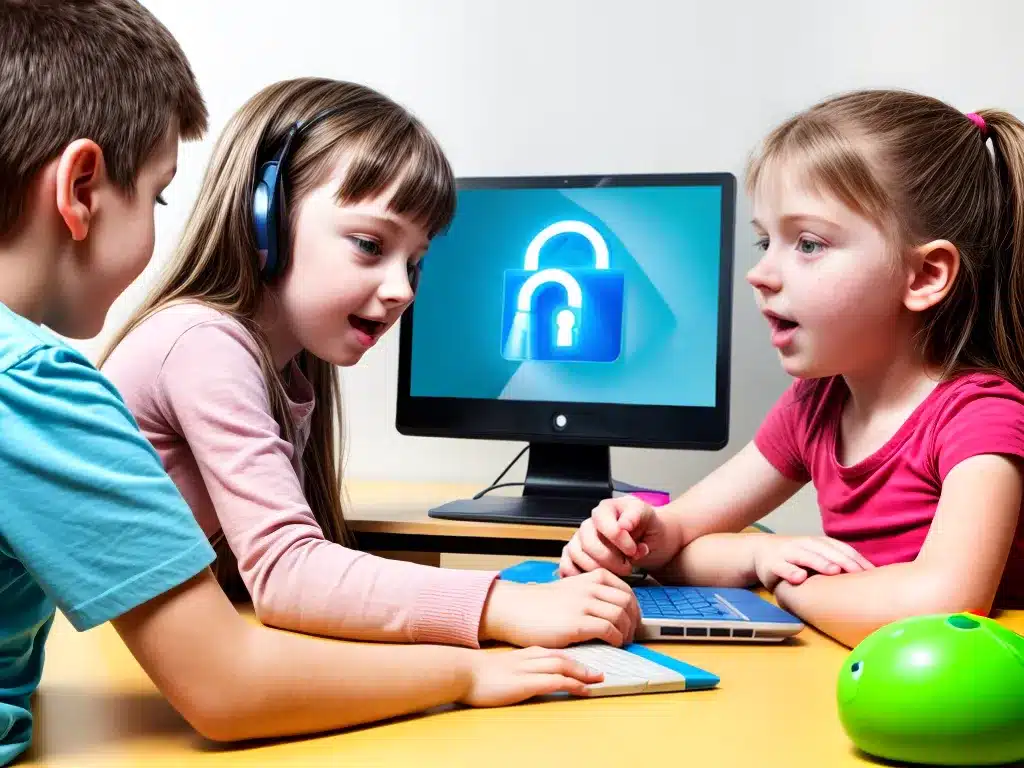Introduction
As a parent, one of my biggest concerns is keeping my kids safe online. The internet opens up so many opportunities for learning and connecting, but it also comes with risks. Teaching kids how to safely navigate the online world is incredibly important. In this article, I’ll provide an in-depth look at strategies for teaching kids of all ages about online safety and security.
Set Clear Rules and Expectations
The first step is establishing clear guidelines for your kids’ online activities. Sit down together as a family to discuss and agree upon rules. Be sure to cover things like:
-
Appropriate websites and apps – Make a list of sites/apps that are okay for your child to use and set age limits. Monitor use.
-
Time limits – How much screen time per day is reasonable? Consider no tech during mealtimes.
-
Sharing personal information – Explain that kids should never share full name, address, phone, school name, etc.
-
Passwords – Kids should not share passwords with friends. Use secure passwords.
-
Downloading – Get parent approval before downloading anything, even free games/files.
-
Being kind – Remind kids to be polite, not bully others online.
-
Telling parents – Kids should feel comfortable telling parents if they see something that makes them uncomfortable without fear of losing tech privileges.
Having an agreement about rules and consequences will provide important guidance. Revisit it as your child gets older.
Lead by Example
As parents, we need to model the online habits we want our kids to follow. They are always watching and learning from us. Consider your own tech use and share examples like:
- Thinking carefully before posting about personal details publicly online
- Having screen-free times during family meals or outings
- Being respectful and kind when commenting online or texting
- Using secure passwords and logging out of accounts
Seeing parents thoughtfully navigate technology safely teaches critical lessons.
Adjust by Age
The types of guidance needed will evolve as your child grows up.
Young Children
- Use kid-friendly search engines and firewalls to filter access
- Preview games/websites and play together
- Set time limits and monitor use
- Explain why some sites are off-limits
- Share examples of being kind online
Pre-Teens
- Discuss interacting with strangers and sharing information
- Talk about cyberbullying and being respectful online
- Explore social media and peer pressure
- Set privacy settings together on social platforms
- Enforce time management limits
Teens
- Discuss legal issues like privacy, copyright, hacking, sexting
- Talk about scams, risky online challenges, online predators
- Share real stories in the news that serve as lessons
- Ensure use of secure passwords and accounts
- Encourage open communication with you about online activities
The conversation will evolve rapidly, so keep discussing regularly.
Recognize Warning Signs
Be alert for any concerning changes that could indicate trouble like:
- Avoiding face-to-face interaction, becoming withdrawn
- Receiving gifts/money from strangers
- Getting unusually upset if loses tech access
- Secretive tech use, hiding screens or apps
- Engaging in risky online behavior like sexting
Talk to kids about warning signs and encourage open dialogue if you have concerns. Don’t overreact, just have a caring conversation to understand what’s happening.
Install Monitoring and Security Software
Use technology tools to add an extra layer of protection like:
-
Parental control software to filter inappropriate content and limit time. Some options are Norton Family Premier, Qustodio, Bark.
-
Location sharing apps like Life360 to keep tabs on kids when away from home.
-
Monitoring apps to get alerts about concerning online activity happening on your child’s devices. TeenSafe is one option.
-
Cyberbullying and content monitoring apps like STOPit let kids report cyberbullying securely and get support.
Use tools ethically and discuss with your child. Avoid spying without consent.
Teach Critical Thinking
One of the best defenses is teaching kids to think critically about what they see and do online. Have open discussions about:
- Identifying misinformation or manipulation online
- Understanding marketing ploys and sponsored content
- Spotting “too good to be true” scams
- Distinguishing credible sources from unreliable ones
- Considering motivations behind online requests for info/images
Sharpening critical thinking helps kids learn digital literacy and make wiser choices.
Recognize Your Limits
Despite your best efforts, things can still go wrong. Recognize that you won’t always have full control or visibility. If your child encounters serious online threats, seek help from counselors, school, or law enforcement. Stay calm, be supportive, and send the message that your child can safely come to you.
The online world is constantly evolving, so stay involved and keep the conversations going. Teaching online safety is an ongoing process, not a one-time discussion. Working together, we can empower kids to become responsible digital citizens.












